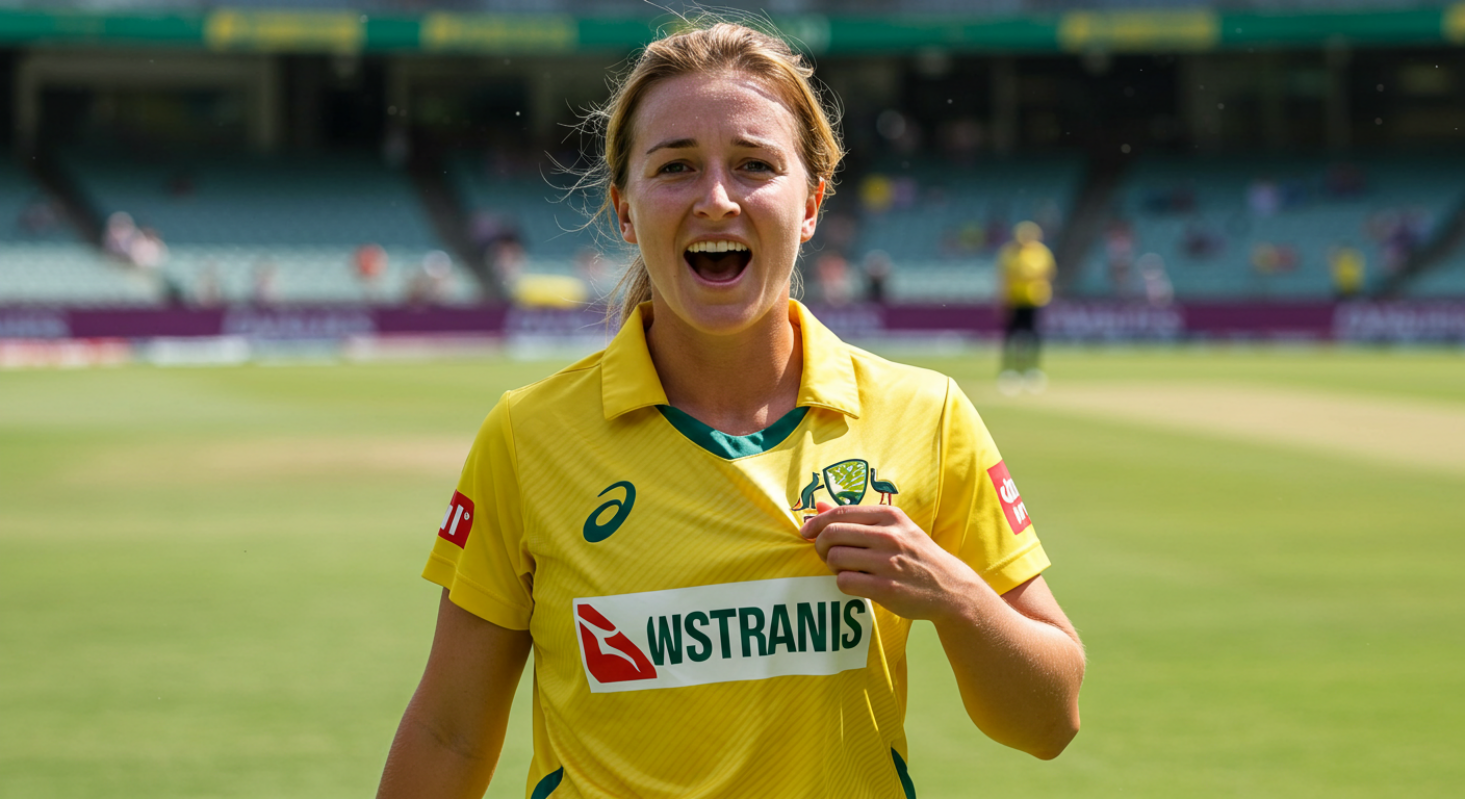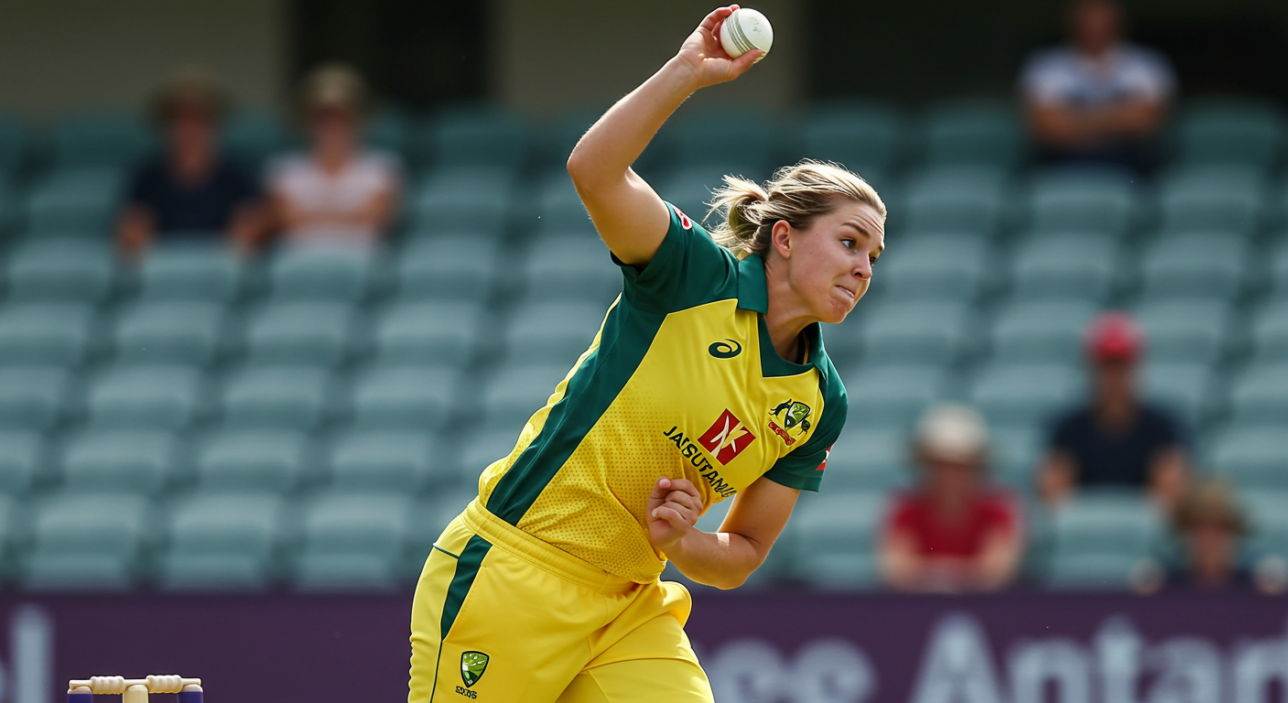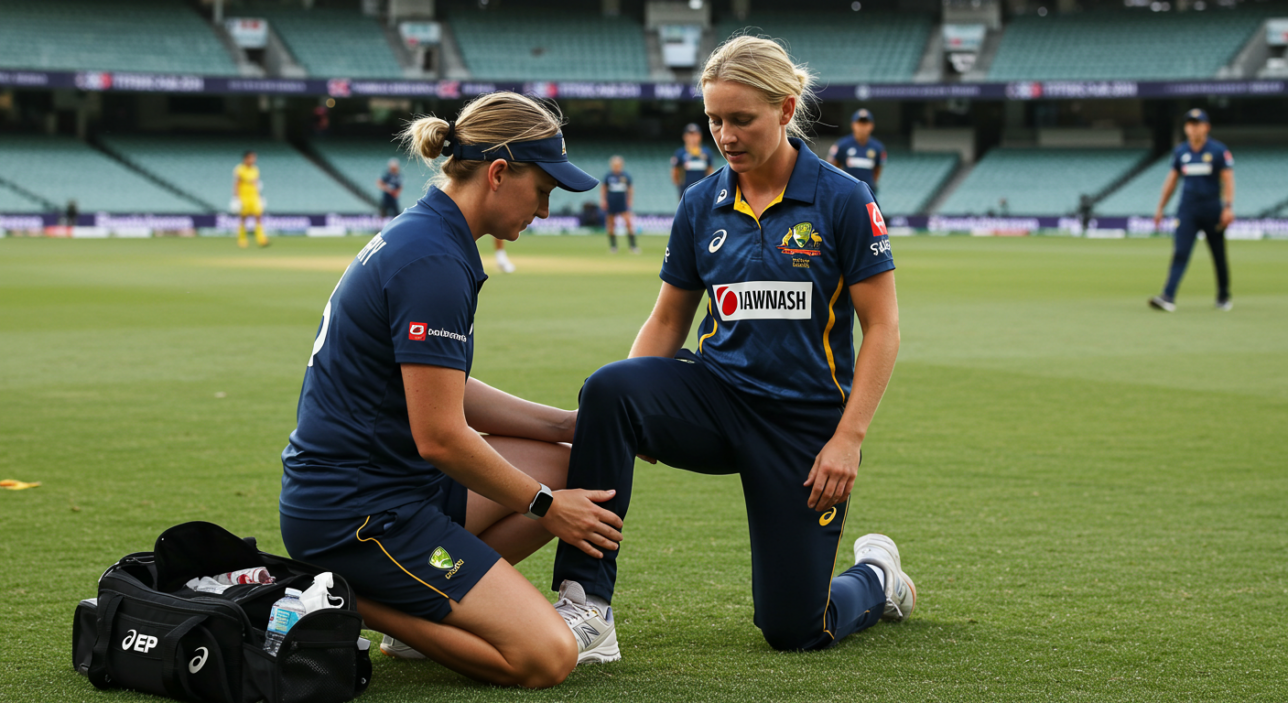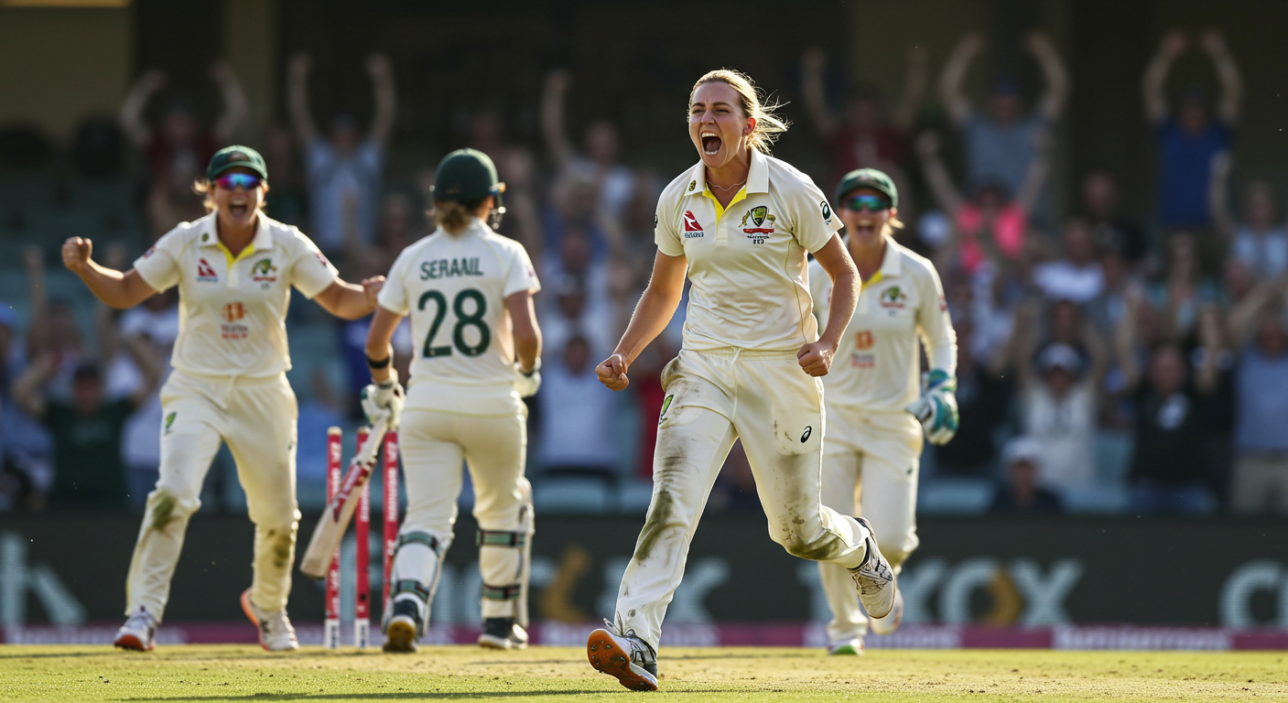
Ellyse Perry: The Gold Standard in Women’s Cricket
In a sport increasingly defined by specialisation and format-specific excellence, Ellyse Perry stands out not simply for her brilliance across disciplines, but for how effortlessly she makes excellence look like a given. Cricketers with long careers are respected. All-rounders are admired. Dual-sport internationals are rare. But Perry is something else altogether—a player whose presence has reshaped the scale of possibility in women’s cricket.
From the moment she debuted for Australia in both football and cricket before her 17th birthday, Perry has carried with her the aura of inevitability. Not in the sense of arrogance, but in the quiet confidence that she could do it all—and do it properly. Across formats, continents, and roles, she has delivered performances that have been not just game-changing, but era-defining.
This article is not a collection of praise for Perry’s statistics—though they are exceptional—but an exploration of how she came to set the benchmark for what modern women’s cricket aspires to be. Through every shift in the game’s popularity, professionalism, and global reach, Perry hasn’t simply adapted—she has led. With the bat, the ball, and an unmistakable sense of poise, she has become the gold standard not because she aimed to be, but because her consistency demanded it.
Dual Beginnings: Talent Without Boundaries

Ellyse Perry’s path to cricketing greatness was paved with choices most athletes never get to make. By the time she was in high school, she had already represented Australia in football and was playing top-level cricket. Her rise was not forced or constructed—it was natural, an organic escalation of raw ability and high-performance temperament.
When she made her cricket debut in 2007, she had barely turned 16. A year later, she was opening the bowling in a World Cup and scoring runs in the middle order. At the same time, she was a key part of the Matildas squad, playing in the AFC Women’s Asian Cup and the FIFA Women’s World Cup. Her athleticism, maturity, and game awareness allowed her to juggle both commitments with astonishing poise.
In truth, the dual-sport narrative, while impressive, risks underselling her focus. Perry was not dabbling in two codes—she was excelling at the highest levels of both. But as cricket became more professional, she was eventually faced with a decision. Rather than split herself between two elite careers, she chose to go all-in on cricket.
That choice would prove to be transformative—not only for her own development, but for the trajectory of women’s cricket itself. Perry didn’t just raise the standard of performance. She raised expectations. She demonstrated that women could be powerful, graceful, media-savvy, and tactically astute, all at once, without compromise.
And from that point on, she never looked back.
The Rise: Dominance Without Disruption
By the early 2010s, Ellyse Perry had fully committed to cricket, and with that singular focus came a period of extraordinary growth. What followed was not a meteoric rise in the traditional sense, but rather an extended phase of quiet domination, where Perry’s contributions—whether with bat or ball—became not just frequent but expected. While many players peak in spurts, she expanded her game in all directions, establishing herself as the cornerstone of Australia’s success across formats.
In a team already full of stars, Perry distinguished herself not with theatrics but through control, composure, and a level of execution that rarely dipped. She bowled with economy and seam movement, delivering long spells that tightened the grip on oppositions. At the same time, her batting evolved—shifting from lower-order cameos to reliable, top-order runs, often delivered with a clarity of purpose that belied the pressure around her.
Her performances in the 2013 Women’s Cricket World Cup and the 2015 Ashes were pivotal. But it was during the 2019 Ashes series that she reached an almost mythical level of performance. Over the course of the multi-format contest, she scored over 300 runs without being dismissed and took seven wickets with the ball, including a spellbinding display of swing bowling at Canterbury that left even seasoned analysts searching for adequate comparisons.
What stood out wasn’t just the volume of contribution—it was the serenity with which she delivered it. Perry never chased attention, yet the weight of her performances demanded it. In the field, she moved with athletic grace; in interviews, she spoke with clarity and calm; on the scorecard, she remained a fixture, never brash, never wasteful.
At a time when women’s cricket was starting to break into mainstream consciousness, Perry provided the perfect focal point—an athlete who not only excelled under pressure but did so while modelling professionalism in its purest form.
A Game-Breaker in All Conditions

What separates great players from consistent ones is adaptability, and it is here that Perry has built one of the most quietly impressive résumés in the modern game. Whether in England under grey skies, on sluggish subcontinental tracks, or on fast, bouncing pitches in Australia, she has delivered with both bat and ball, tailoring her approach with a level of maturity and precision that few all-rounders have achieved.
With the ball, she is not express pace, but her height and wrist position allow her to extract bounce and seam movement, especially in helpful conditions. More importantly, her lines are consistent, and her ability to bowl within a plan—even in the high-scoring chaos of T20s—has made her a go-to bowler during crunch overs. She is not the death-bowling specialist, nor the wild-card gamble. She is the stabiliser—the bowler who keeps the required run rate climbing while making batters work for every run.
With the bat, Perry’s role has evolved. Earlier in her career, she was often deployed as a hitter to rescue innings in the final overs. But as her game matured, she grew into a calm accumulator, anchoring innings in ODIs and Tests while still possessing the gear shift to dominate in T20s when needed. Her century against England at Taunton in the 2019 Test—an unbeaten 116—remains one of the finest examples of controlled Test-match batting in the women’s game.
Through every shift in the game’s tempo, through every tactical adjustment demanded by new formats, Perry has not only remained relevant—she has often been the standard others are measured against.
Shaping the Era: Excellence Beyond Performance
By the mid-2010s, Ellyse Perry was no longer just Australia’s best all-rounder—she had become a cultural anchor in the women’s game, someone who symbolised its shift from semi-professional obscurity to mainstream relevance. Yet what made her influence so enduring was not that she courted attention, but that she consistently earned it without ever appearing to seek it.
As women’s cricket gained visibility through expanded media coverage, ICC backing, and the birth of leagues like the Women’s Big Bash and The Hundred, Perry stood as its most recognisable face. She gave broadcasters the highlights, but more importantly, she gave the sport a public image that was grounded in calm authority. While others brought flair and flair alone, Perry brought longevity, leadership, and the kind of quiet charisma that sponsors, fans, and teammates gravitate toward.
Australia’s dominance during this period—World Cup wins, unbeaten stretches, record-breaking series—was shaped by many factors, but Perry was central to almost all of them. Her consistency allowed Australia to play aggressive cricket with freedom, knowing they had her as both a safety net and a momentum builder. She was the player they turned to in crisis and the one who often defused those crises before they escalated.
In a dressing room full of talent, she became the reference point, not just for performance but for professionalism. Her presence helped set standards—not through speeches or slogans, but by demonstrating what preparation, focus, and emotional composure looked like day after day. Players like Meg Lanning, Alyssa Healy, and Beth Mooney have often spoken of Perry’s impact—not in dramatic terms, but with the kind of respect that’s reserved for those who change the tone of an entire environment.
What made Perry’s influence distinct was its stability. While women’s cricket was evolving rapidly—adapting to new formats, fighting for equality, managing public scrutiny—she provided a sense of continuity. She was not swept up by the turbulence. She anchored it.
Injury, Introspection, and the Return

Even for athletes of the highest calibre, the body eventually intervenes. For Perry, that moment arrived in 2020 during the T20 World Cup when a hamstring injury forced her out of the semi-final and final. It was a symbolic blow as much as a physical one. Australia went on to lift the trophy, but Perry, who had been instrumental in their lead-up matches and in previous tournaments, was forced to watch from the sidelines.
For the first time in years, she was absent at a decisive moment. What followed was a long recovery—longer than anticipated—and with it, speculation about her future. Would she return at full strength? Had the younger generation overtaken her? Was there still a role for her in a squad that had learned to win without her?
Perry, predictably, said little publicly. Instead, she focused on rehabilitation, on refining her game, and on returning not just to participate, but to compete. When she made her comeback in late 2021, there were no extravagant celebrations. There was, however, a noticeable shift. Her bowling load was managed carefully, and her batting became more central to her role. She began anchoring chases, rebuilding from collapses, and occasionally unleashing the kind of innings that reminded the world exactly who she was.
What this phase proved is what the first decade of her career had already suggested—Perry is not defined by spectacle, but by her ability to recalibrate and remain essential. She did not rage against time or form. She simply adapted.
Her return wasn’t about reclaiming the spotlight. It was about extending her shadow quietly, once again.
Beyond the Boundary: Role Model, Trailblazer, and Quiet Force
Ellyse Perry’s legacy was never going to be confined to the numbers on her stat sheet—though they are remarkable by any measure. It resides in the way she has redefined possibility within a sport that, until recently, offered limited space for women to be both elite athletes and cultural icons. Perry occupies that space with a rare balance of grace and grit, never demanding admiration, but almost always commanding it.
She has become one of the few cricketers—regardless of gender—whose appeal transcends sport. From corporate panels to primary school visits, from ICC awards ceremonies to grassroots coaching camps, Perry’s reach is broad not because she seeks attention, but because she represents something aspirational. She offers a version of success that is serious without being severe, accessible without being ordinary, and impressive without being over-celebrated.
Importantly, she has managed to maintain this balance without diluting her core purpose: performing on the field. Many athletes falter when their off-field visibility increases, but Perry has never appeared distracted by it. Instead, she has used it to elevate others—advocating for better contracts, greater visibility for the women’s game, and more structural support for the next generation. Her name carries weight, and she has used it to shift conversations around equality without turning herself into a talking point.
In a team that thrives on depth and versatility, Perry has remained irreplaceable not because she insists on being in the spotlight, but because her presence lifts the standard quietly, repeatedly, and without pause for applause.
Conclusion: A Career That Redefined the Possible

Ellyse Perry’s greatness lies not in a single innings or a memorable spell, but in the accumulated weight of consistency across time, formats, roles, and expectations. For nearly two decades, she has not only excelled in cricket, but has shaped the very notion of what excellence in women’s sport looks like—technically, physically, and professionally.
Her career is a study in range and reinvention. She began as a precocious all-rounder, matured into a reliable match-winner, and then returned from injury with the poise of a seasoned architect of innings. She has batted anywhere from the top to the lower middle order, bowled in the Powerplay and the death, and adapted to whatever role her team has required. Each time, she has delivered not with flash, but with an unwavering clarity of purpose.
More than her skill, what defines Perry is her temperament. She does not chase records, yet they accumulate. She does not posture for the camera, yet it lingers on her. Her legacy will not just be in the runs scored or wickets taken, but in the way she carried herself—unshaken by hype, undeterred by setbacks, and uninterested in shortcuts.
As women’s cricket steps into a new era of expansion and commercial growth, Perry’s career will remain a reference point. Not because she shouted the loudest, but because she set the bar the highest—and kept it there longer than anyone thought possible.





